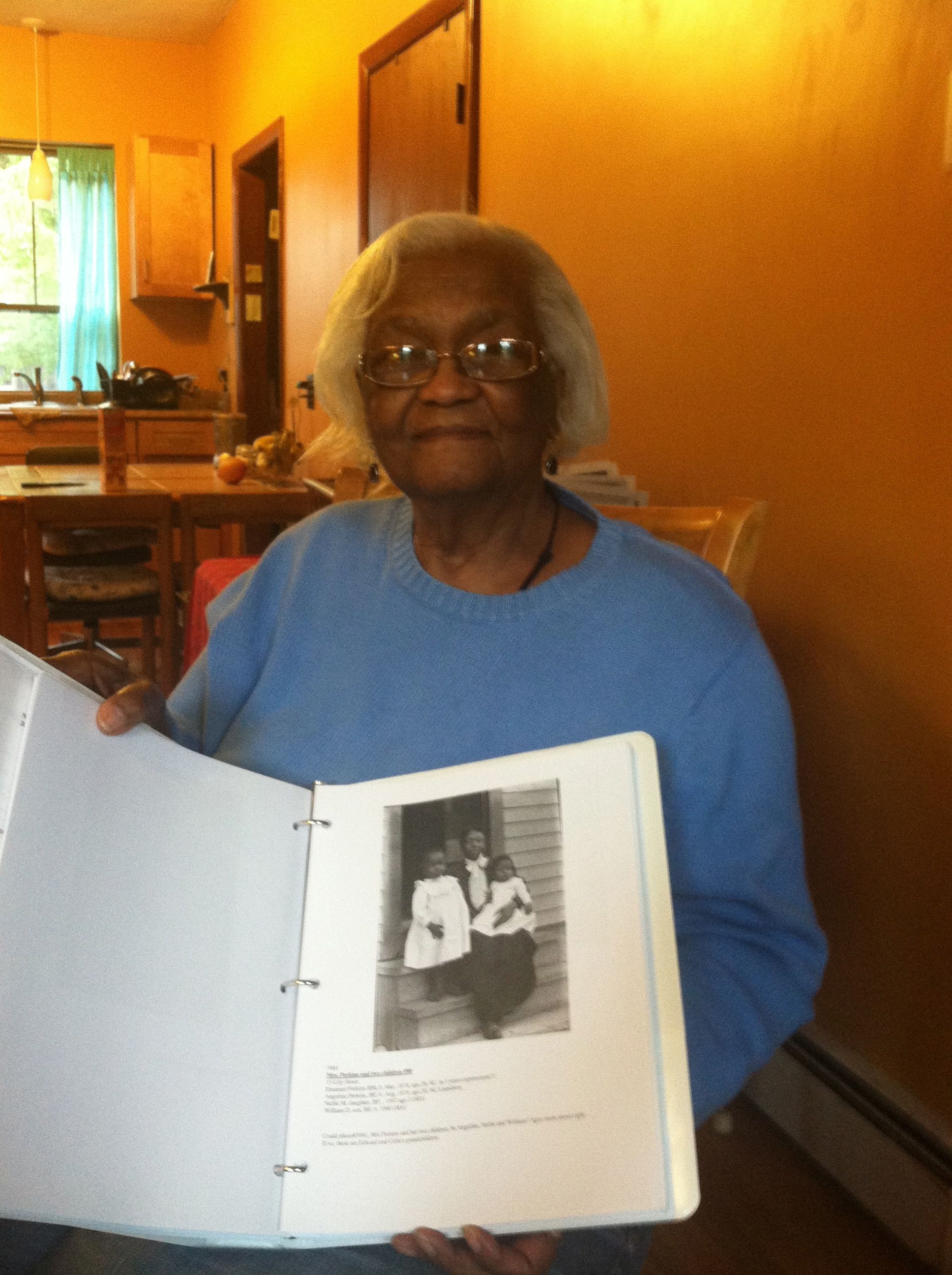“That looks familiar. I have a picture like that.” With these words, Lois Perkins Cato fulfilled Frank’s dream of locating one of Bullard’s photos in the possession of a family member. Following up on Shirley Carter’s information a few weeks earlier, shared at the Worcester Public Library meeting, Janette headed to Boston to meet with her stepsister, Lois Perkins Cato. Seeing the image of her infant father, Aunt Nellie and Grandmother Angeline (called “Grammy”), Mrs. Cato immediately recognized it as one that she owns. Along with her son Paul, Mrs. Cato perused the photo collection. It turned out that not only did we have a photo of her dad, aunt, and grandmother, but we also have her great-grandparents (Paul’s great-great grandparents) on the Perkins side, Edward and Celia Perkins, the parents of Lois’ paternal grandfather.
Edward and Celia had been of special interest to us as they were born slaves in Camden, South Carolina, owned land in Kershaw County, SC, in 1870 and lost it by 1880, during the decade of white “Redemption.” They appear in Worcester by 1900 on Bath Street where Celia was a washerwoman and Edward a truckman. Edward died in Worcester in 1920 at age 87 and Celia died four years later at age 92. Their son, Emmanuel, born in South Carolina in 1874, married Lois’s grandmother, Angeline Jones, in 1897, and died in Worcester in 1911. Mrs. Cato noted “All she [Angeline] ever told me was that she was 12 years old when her mother moved her to Worcester” from North Carolina. Little information has been passed down about the South Carolina Perkins family, but Mrs. Perkins pointed out that her stepmother was from Camden, also, and that she spent many summers visiting relatives there. Mrs. Perkins pointed out that her father, William Dempsey, worked as a porter in Union Station and loved to hunt and fish. Paul also remembers “Grampy” as “a hunter. Loved to hunt.”
 Mrs. Cato gave us a sense of what it was like growing up in the Beaver Brook neighborhood, where she attended Abbott Street School: “It was a close-knit neighborhood.” She recalls, “ We played together. It was a neighborhood. We were in and out of each other’s houses. . . . We played games together . . . there was a group of us girls who traveled together. We’d call each other. ‘What are you wearing today?’ and we’d all wear the same kind of white blouse and black skirt, that kind of thing.” She attended church at Belmont AME Zion Church and high school at Girls Trade and moved to Boston after high school. Summing up, she explained, “In Worcester, it was such a small community of black people. And everyone knew everyone.”
Mrs. Cato gave us a sense of what it was like growing up in the Beaver Brook neighborhood, where she attended Abbott Street School: “It was a close-knit neighborhood.” She recalls, “ We played together. It was a neighborhood. We were in and out of each other’s houses. . . . We played games together . . . there was a group of us girls who traveled together. We’d call each other. ‘What are you wearing today?’ and we’d all wear the same kind of white blouse and black skirt, that kind of thing.” She attended church at Belmont AME Zion Church and high school at Girls Trade and moved to Boston after high school. Summing up, she explained, “In Worcester, it was such a small community of black people. And everyone knew everyone.”